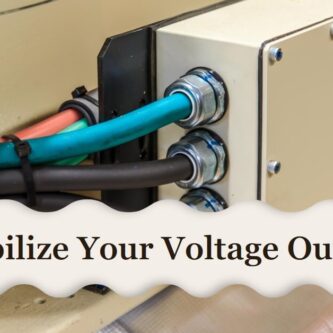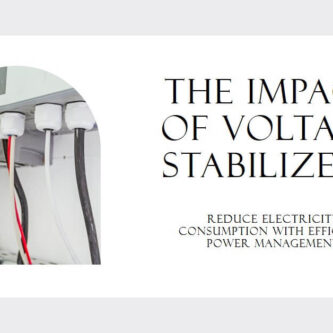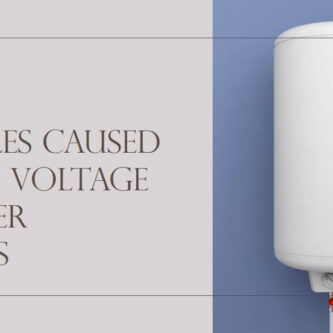RV fridges are a crucial component of a comfortable road trip or camping experience. They keep your food and beverages cool and fresh while you’re on the move.
But what happens when you don’t have access to shore power or a generator? That’s where inverters come in.
Inverters are devices that convert DC power from your RV’s battery into AC power, allowing you to run appliances that require 120V AC power.
In this article, we’ll discuss whether you can run an RV fridge on 120V mode with an inverter, the benefits and challenges of doing so, and the steps you need to follow to make it happen.
Understanding Your RV Fridge
Before we dive into the topic of inverters, it’s important to understand how your RV fridge works.
RV fridges run on either AC or DC power, or both. AC power comes from a shore power hookup or a generator, while DC power comes from your RV’s battery.
When your RV fridge is running on AC power, it uses a heating element to heat up the ammonia-based solution in the cooling system.
The heated solution evaporates, absorbing heat from the fridge’s interior and cooling it down. When it’s running on DC power, it uses a compressor to compress and expand the refrigerant, which cools down the fridge.
The Basics of Inverters
An inverter is a device that converts DC power from your RV’s battery into AC power, allowing you to run appliances that require 120V AC power. There are two types of inverters: pure sine wave and modified sine wave.
Pure sine wave inverters produce AC power that’s identical to the power you get from a household outlet.
They’re more expensive than modified sine wave inverters, but they’re also more efficient and produce less electrical noise, which can interfere with sensitive electronic devices.
Modified sine wave inverters, on the other hand, produce AC power that’s not as clean as pure sine wave power.
They’re less expensive than pure sine wave inverters, but they’re also less efficient and can damage some types of appliances.
On the Road Again: Powering Your RV Fridge with an Inverter
It is not practical to run an absorption refrigerator from batteries as it uses heat to provide the power to run the cooling unit.
This method is much less efficient compared to using a motor-driven compressor. Absorption refrigerators use heating elements that draw a lot of power ranging from 350 to 600 watts, which is about 10 times as much power as a conventional compressor-driven refrigerator uses.
Two 10-watt solar panels make their full-rated power produce 20 watts, but if your refrigerator uses 400 watts, that’s 20 times as much power as your solar panels produce under ideal conditions. This means that an absorption refrigerator will use an hour’s worth of solar power in just 3 minutes.
While it may be possible to run the refrigerator from an inverter while driving, the vehicle’s alternator must be able to handle the extra load on the battery to supply the extra power that the refrigerator is drawing.
This could increase the load on the vehicle’s alternator significantly, making it vital to ensure that it can produce enough power to run the rest of the vehicle as well.
However, you can run an RV fridge on 120V mode with an inverter, there are some things you need to keep in mind.
To run an RV fridge on an inverter, follow these three steps:
- Choose a powerful inverter that can handle the fridge’s load.
- Ensure sufficient battery capacity to power the fridge.
- Ensure proper installation and connection of the inverter to prevent damage or fire.
Challenges of Running an RV Fridge on an Inverter
While running an RV fridge on an inverter has its benefits, there are also some challenges you need to be aware of.
One of the main challenges is that inverters can be expensive, especially if you need a high-powered one to run your fridge. Additionally, inverters consume power themselves, which can drain your battery faster.
Another challenge is that inverters can produce electrical noise, which can interfere with sensitive electronic devices. This is especially important to consider if you have a lot of electronics in your RV, such as a TV, a laptop, or a sound system.
Finally, running an RV fridge on an inverter will consume a lot of energy from the batteries and will run batteries out of energy very fast
Read also my article: Is Voltage Drop Killing Your Refrigerator? Here’s What You Need to Know
Steps to Run an RV Fridge on Inverter
If you’ve decided to run your RV fridge on an inverter, here are the steps you need to follow:
- Choose the right inverter: Make sure you choose an inverter that’s powerful enough to run your fridge and that produces clean AC power.
- Install the inverter: Follow the manufacturer’s instructions to install the inverter in a safe and accessible location.
- Connect the inverter to your RV’s electrical system: Make sure you connect the inverter properly to your RV’s battery and electrical panel.
- Test the system: Turn on your fridge and make sure it’s running in 120V mode. Monitor your battery levels and adjust your power usage as needed.
- Maintain your system: Regularly check your battery levels, make sure your inverter is functioning properly, and address any issues that arise.
Conclusion
Running an RV fridge on 120V mode with an inverter can be a great way to enjoy the comforts of home while on the road.
However, it’s important to choose the right inverter, understand your RV’s electrical system, and practice good power management to avoid damaging your appliances or draining your batteries too quickly.
By following the steps outlined in this article, you can ensure that your RV fridge runs smoothly and that you’re able to enjoy fresh food and beverages wherever your adventures take you.




